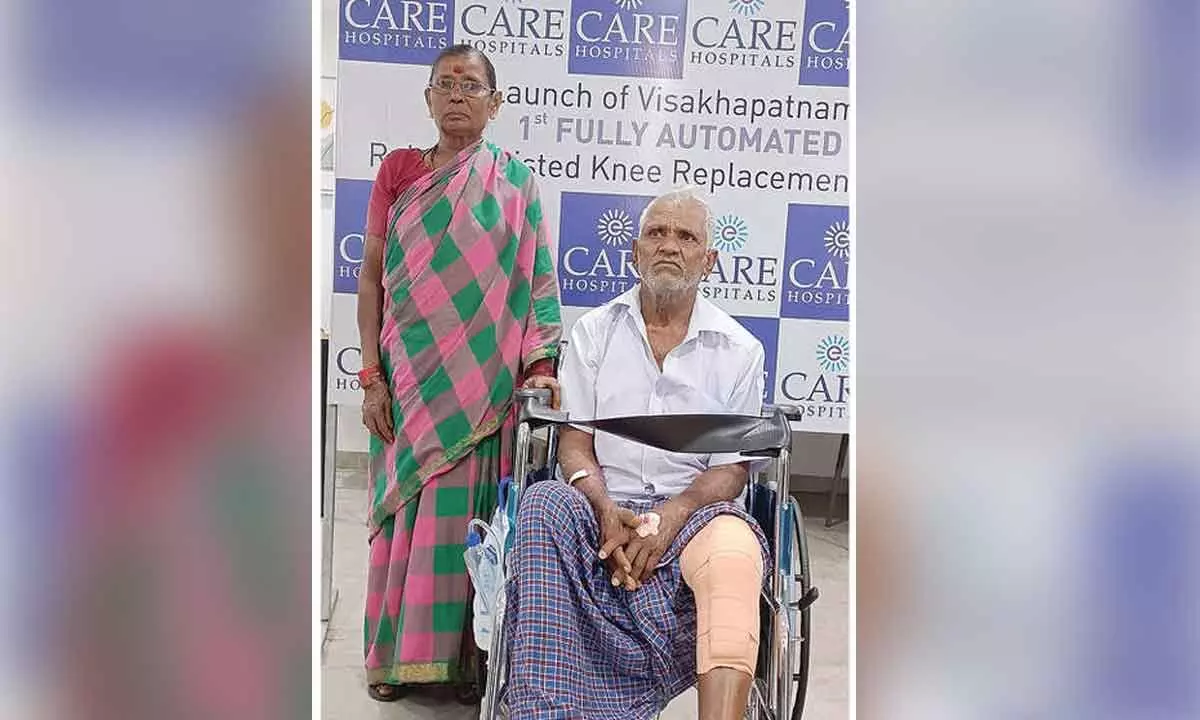First robotic knee replacement surgery conducted

Care Hospitals successfully completed its first robotic knee replacement surgery in Visakhapatnam
Care Hospitals in Visakhapatnam announced its successful completion of its first robotic knee replacement surgery using the recently procured Cuvis, the most advanced surgical cutting-edge robotic technology, the Orthopaedics Company of Meril.
Visakhapatnam: Care Hospitals in Visakhapatnam announced its successful completion of its first robotic knee replacement surgery using the recently procured Cuvis, the most advanced surgical cutting-edge robotic technology, the Orthopaedics Company of Meril.
The hospital introduced an innovative technology for knee replacement surgery. The advanced robotic assisted system is designed to bring benefits of precise implant positioning, greater mobility and better knee range of movements, faster recovery time, and reduced hospital stay, less pain and blood loss, and lesser chances of revision surgery.
Speaking on the occasion, HCOO of the hospital Mayukh Chaudhuri said, “We are delighted to introduce the highly advanced robotic-assisted solution for knee replacement surgery. The innovative robotic-assisted solution will complement the surgeon’s current workflow and help plan, execute, and perform the surgery precisely with excellent patient outcomes. We look forward to using this innovative robotic system to expand access to the existing benefits of minimally invasive knee replacement surgeries.”
G Srinivas (SRS ortho team), ortho robotic surgeon said the system helps increase the accuracy of implant alignment and surgical reproducibility while shortening patient recovery and reducing post-operative complications.
KS Praveen Kumar, ortho robotic Surgeon mentioned that robotic knee replacement is advantageous over traditional knee replacement.
It’s a new arm to the surgeon and helps in giving specific data to the surgeon like bone shape, size and ligament strength accurately, he informed.
With gap balance data to help surgeons visualize and predict joint stability, the robotic-assisted solution aims to help surgeons improve the quality of life for patients.

